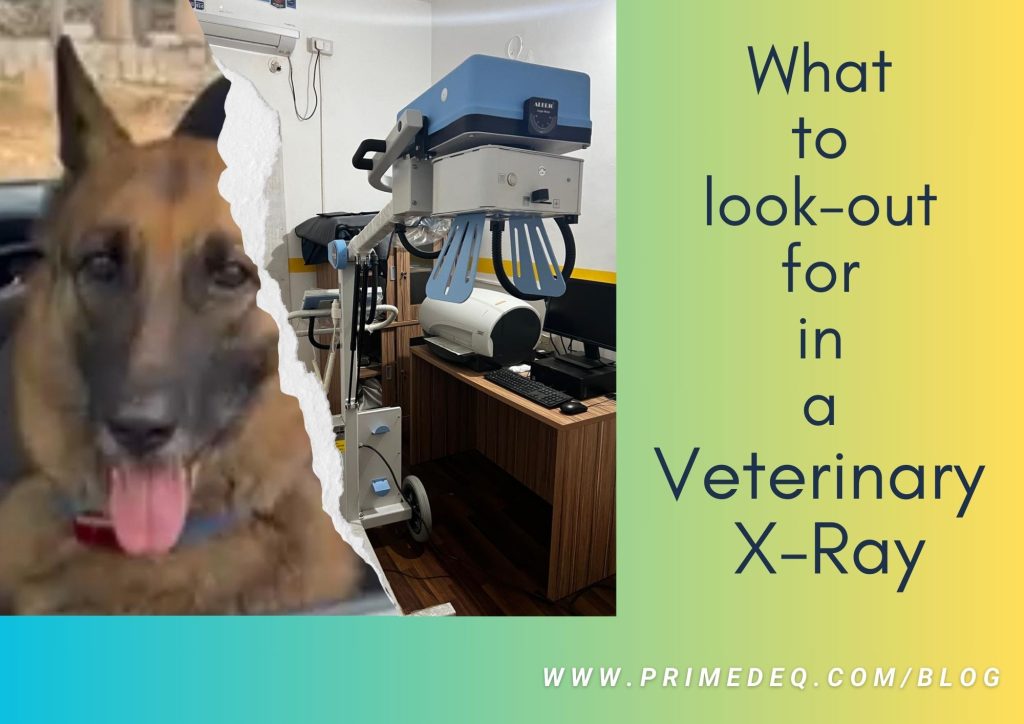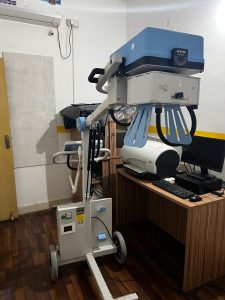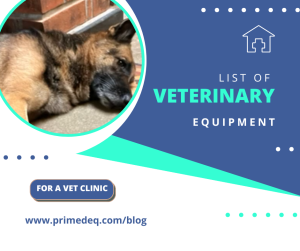
Are Veterinary X-Ray Machines different?
Dogs are the most common pets in India with nearly 63% of pet owners having dogs. As per an article, there are 31 million pet dogs and 2.44 million pet cats, while there are 69 million homeless dogs and cats. There are other pets too, but fewer in numbers. The cattle population in India in 2019 was estimated around 192.5 million. The pet care industry in India is growing at a CAGR of roughly 5%. Significant part of this growth is also associated with veterinary care clinics, especially in the urban areas. Veterinary medical care requires specific equipment, different from human healthcare. Often when a pet such as a dog has an injury, x-ray machine is needed for proper diagnostics. Veterinary X-Rays are based on the same technology as the human X-rays, but are appropriately sized for smaller animals such as dogs and cats or larger animals such as horses and cattle. Let us look at some important features to consider when evaluating a veterinary X-Ray machine.
Veterinary X-Ray tables
Veterinary X-Ray table could be a simple X-Ray table, bucky table or four-way floating tables, each giving more convenience to position the animal appropriately. They are usually smaller in size e.g. maximum length of 140cm in case the animals being treated are dogs and cats which vary between 10-110 Kg in weight.

X-Ray Generator
If the animals being treated are smaller such as cats and dogs, upto 100mA is more than enough. Use of Automated Exposure control (AEC) is also preferable so as not to cause over-exposure. On the other hand, for larger animals such as cattle and horses, which could weigh over 500Kg, higher X-Ray capacities such as 500-800mA would be required. The X-Ray table should also have higher weight capacity.
Use of Restraints and proper positioning aids for veterinary imaging
It is very tough to position animals and ensure they hold still, to get a good image of the area of concern. Often the caregiver needs to hold them in which case they should wear proper protective gear and avoid being direct in the line of X-Ray, so as to minimise radiation exposure. Sometimes anesthesia or chemical restraint may have to be used, especially if the animal is particularly in pain and area of concern hard to position otherwise. The most commonly used positioning aids are sandbags, foam wedges, troughs, body cradles, head & neck support or immobilizer, vacuum immobilisation mattress or ties.
Portable Veterinary X-Ray machine
A portable X-Ray machine is most popularly used especially in case of smaller animals, due to ease-of-use, mobility and adequacy of capacity.
CR or DR Systems for Veterinary X-Ray
All Veterinary X-Rays can be used with a CR System. DR Systems are also available these days. The standard CR cassette sizes of 14”x17”, 14”x14”, 10”x12”, 8”x10” and 6”x12” are used for all types of investigations.
—————————————————————————————————————————
PrimedeQ is an e-Marketplace for buying, selling, renting, servicing and spares of medical equipment. We offer all types of used / refurbished medical equipment , including veterinary equipment, Lab equipment, IVF equipment, cathlab, ECG machine and other diagnostic equipment, endoscopes, OT equipment, Laparoscopic Equipment, X-Ray, TMT, anesthesia machine, ultrasound machines etc including physiotherapy and rehabilitation equipment (New & Used). We offer repair services for all types of medical equipment.
Contact us for any medical equipment requirements on 7019759765.
https://in.linkedin.com/in/shanthi-mathur-ab07838

